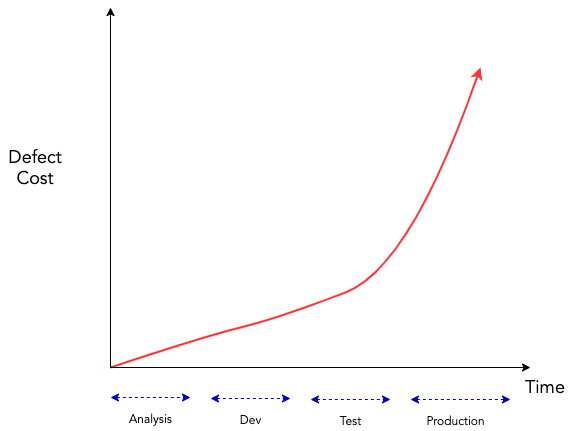Accelerate Your Software Feature Development: Unleash the Power of Code Testing and Debugging
The intricate tasks of code testing and debugging often do not receive the spotlight they deserve in the software development process. Rather than viewing them as mundane chores, it’s crucial to recognize their significant role in fast-tracking feature development and guaranteeing the delivery of solid, high-quality software products.
An Insight Into Code Testing
Code testing is critical because it validates that your application is functioning as designed. More than that, it serves as a safety net, catching errors before they reach the end-users and mitigating the risk of costly and potentially damaging system failures. Testing consists of various layers, including unit tests, integration tests, and system tests. We will focus mainly on unit tests, the first line of defense in software reliability.
Unit tests validate the smallest testable components of the system (the ‘units’) like functions, procedures, or methods. These tests fall into three primary categories:
Testing the actual code: The core aim of unit testing is to verify each individual component of your codebase. By focusing on small, isolated parts of the system, we not only ensure that each unit functions correctly, but we also promote modular design. Designing software in modular units encourages separation of concerns, making the codebase more maintainable and understandable. It reduces interdependencies, making it easier to identify, isolate, and fix issues without the risk of unintended side effects. Furthermore, well-structured, modular code makes it simpler to onboard new team members and allows for better parallelization of development work.
Testing proper call sequences within the application context: This focuses on validating interactions between your software’s components. Here, we’re ensuring that the code under test correctly interfaces with other parts of the system. It involves confirming the correct sequence of calls, the passing of appropriate parameters, and meeting the necessary preconditions. This kind of testing is vital in making sure different components of your software integrate seamlessly with each other, hence reducing the likelihood of issues during more complex, integrated testing stages.
Testing edge cases and improper inputs: This kind of testing focuses on the boundaries and beyond, dealing with situations that may not occur frequently but could cause significant problems if not handled correctly. These include extreme values, unexpected types, or even malicious inputs, ensuring that the software behaves robustly under all circumstances. By confirming that the software can handle these scenarios gracefully - not crashing or generating incorrect results - you’re fortifying your software against potential breakdowns, enhancing its resilience and reliability.
A proper Integrated Development Environment (IDE) can significantly aid in the testing and debugging process. For example, PyCharm by JetBrains, provides powerful features like syntax highlighting, error detection, and automated testing tools.
Visual Studio Code is another excellent option. Its wide array of extensions and integrations makes it highly adaptable to different programming languages and testing frameworks.
Debugging: Accelerating the Journey from Bug Discovery to Resolution
Debugging, which involves identifying and rectifying bugs, is a key aspect of refining the software and enhancing its functionality.
Leveraging tests for debugging offers a systematic methodology for identifying and resolving bugs. It provides a structured approach to understanding how your code behaves and, more importantly, why it behaves the way it does.
When tests fail, they give you the precise location of bugs in your code, and this guides your debugging efforts. But the benefits don’t stop there. This feedback loop helps in designing software modules more effectively. How so?
By necessity, testing nudges you towards modular design, where software is composed of separate independent units. This principle makes your code more maintainable and easier to understand. When a test fails, you can isolate the issue to a particular module, making bugs quicker to diagnose and fix.
By integrating debugging with tests, you’re setting the stage for enhanced software design that is maintainable, robust, and easy to iterate upon. It’s a smart approach that makes bug diagnosis less of a headache and more of a manageable, systematic process.
It’s also important to understand that the creation of tests requires considerable creative problem-solving skills, a deep understanding of the software, and an ability to foresee potential issues from different perspectives. Thus it is often during this testing and debugging process that developers gain a profound understanding of how their code operates, leading to efficient and effective development in subsequent stages.
Product Managers and Non-Technical Stakeholders: Facilitating Success in Testing & Debugging
In software development, product managers and other non-technical stakeholders play a uniquely synergistic role in the process of testing and debugging. Their ability to bridge the gap between the technical and business sides of a project is key in facilitating an effective and efficient testing process.
Their contributions to this process can be considerably amplified by:
Defining clear acceptance criteria: Setting clear acceptance criteria forms the backbone of a project’s roadmap. Acceptance criteria are essentially conditions that a software product must meet to be accepted by a user, customer, or in the case of internal systems, the managing team. It’s important to ensure these are defined with clarity, as they set expectations and guide developers in their work.
Clear acceptance criteria should be specific and measurable. For example, instead of saying “The app should load quickly,” specify “The app should load within 3 seconds on a 4G network connection.” This level of clarity guides the development and testing teams to create more efficient and effective tests.
One of the most effective ways to write acceptance criteria is by using the Given-When-Then format. This technique, often used in Behavior Driven Development, provides a clear and concise structure that bridges the communication gap between technical and non-technical stakeholders.
Here’s how it works:
- Given provides the context. It describes the initial situation or precondition.
- When describes the key action, the event that triggers the behavior you want to test.
- Then defines the expected outcome or the observable changes due to the event described in the When step.
By using this format, acceptance criteria become more understandable and transparent for all team members. For example:
- Given a user is logged in and has items in their shopping cart,
- When the user clicks on the ‘checkout’ button,
- Then the user should be redirected to the checkout page showing the details of the items in the cart.
Establishing clear acceptance criteria allows developers and testers to understand precisely what needs to be done and aligns everyone’s expectations.
Streamlining communication: Ensuring efficient communication is pivotal to the successful execution of a project. Recognizing the nature of programming, which demands intense focus and periods of uninterrupted work, it’s essential to balance the need for regular updates with respecting a developers time and workflow.
Rather than relying heavily on meetings, consider asynchronous communication methods. Use project management tools, collaborative platforms, or even scheduled email updates to keep everyone in the loop about project progress, potential issues, and any changes in requirements.
Ensure that meetings, when necessary, have clear agendas and actionable outcomes to maximize their value. Additionally, creating an environment where developers feel comfortable discussing testing and debugging can lead to a better understanding of these processes for everyone involved.
Understanding the value of testing and debugging: Comprehending the significance of these activities is often a challenging task for non-technical stakeholders, primarily due to the lack of direct, measurable business outcomes. However, stakeholders can consider metrics like the number of bugs found and fixed, time spent on fixing bugs during development vs. post-release, and the number of issues reported by users after a release. These can provide insight into the impact of a robust testing and debugging process.
By appreciating these processes’ value, stakeholders can better support development teams by allocating adequate resources and time for testing and debugging activities. This understanding also nurtures a culture where quality is highly valued and consistently achieved.
The Proven Impact of Testing and Debugging
The positive influence of testing and debugging on project success is a well-documented fact in the world of software development. A vital part of the Software Development Life Cycle (SDLC), these activities are key in ensuring the delivery of a high-quality software product. Research has consistently shown that the earlier a defect is identified in the software development lifecycle, the cheaper it is to fix. This importance becomes apparent when we consider the “Cost of Change Curve” introduced by Barry Boehm in his seminal work, “Software Engineering Economics”[1].

His research eloquently demonstrated that the cost to detect and resolve defects increases exponentially the later these issues are found in the development process. This insight gave birth to the concept known as the “Shift Left” approach, which advocates for earlier and more frequent testing in the SDLC. This concept suggests that prioritizing these tasks can lead to fewer bugs in production and more predictable delivery timelines.
Additionally, empirical research conducted by tech giants Microsoft and IBM validated the efficacy of unit testing. Their findings revealed a significant drop in the defect rate in projects where developers wrote and maintained unit tests, compared to those that did not. These studies also indicated that unit testing resulted in more stable software and increased developer productivity. This translates to fewer bugs being reported by users and quicker feature development[2].
Furthermore, more recent developments in software development methodologies, like Continuous Integration and Continuous Deployment (CI/CD), highlight the critical role of ongoing testing and debugging. These practices lead to faster feature development, improved code quality, and an overall more agile and responsive development cycle[3].
In Conclusion
Investing in the processes of code testing and debugging is a decision that pays dividends in the long run. Not only do these processes ensure that software features work as expected, but they also play a vital role in maintaining and improving the quality of the software over time.
In a world where software is increasingly becoming the backbone of businesses and daily life, it is more crucial than ever to prioritize software testing and debugging as key components of a sound development process. By adopting a systematic and thoughtful approach to these tasks, and by fostering an environment that supports these activities, businesses can accelerate feature development, enhance software quality, and ultimately deliver products that delight users and stand the test of time.
References
- Boehm, B. W. (1981). Software Engineering Economics. Prentice-Hall, Inc.
- Nagappan, N., Maximilien, E. M., Bhat, T., & Williams, L. (2008). Realizing quality improvement through test driven development: results and experiences of four industrial teams. Empirical Software Engineering, 13(3), 289-302.
- Hilton, M., Tunnell, T., Huang, K., Marinov, D., & Dig, D. (2016). Usage, costs, and benefits of continuous integration in open-source projects. In Proceedings of the 31st IEEE/ACM International Conference on Automated Software Engineering (pp. 426-437).
